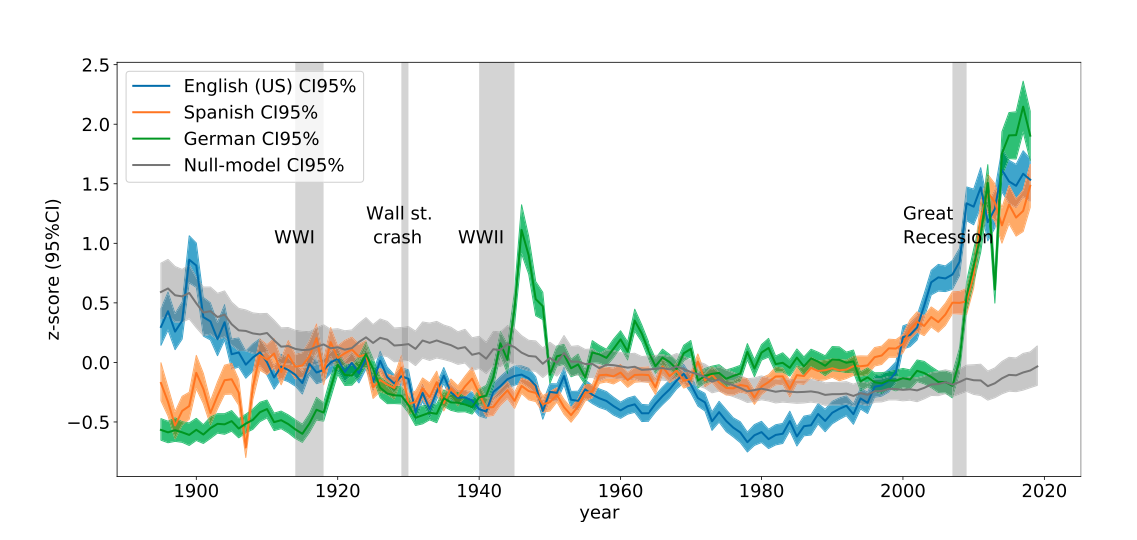Despite decades of research, scientists still know little about the source of creativity. Nonetheless, humans continue to create things. Or, at least, we continue to be fascinated by creativity; now more than ever, it seems. There may be as many best-selling books on creativity as there are on dieting or relationships. The current focus on creativity isn’t always a net positive. Anyone who does creative work may be labeled a “Creative” (used as a noun) at some point in their career. The term lumps all working artists together, as though their work were interchangeable deliverables measured in billable hours. The word suggests that those who don’t work as “Creatives” have no business in the area of creativity. As psychologist Mihaly Csikszentmihalyi put it:
Not so long ago, it was acceptable to be an amateur poet…. Nowadays if one does not make some money (however pitifully little) out of writing, it’s considered to be a waste of time. It is taken as downright shameful for a man past twenty to indulge in versification unless he receives a check to show for it.
Csikszentmihalyi, who passed away this month, deplored the instrumentalization of creativity. He wrote, Austin Kleon notes, “about the joys of being an amateur” — which, in its literal sense, means being a devoted lover. Like Carl Jung, Csikszentmihalyi believed that creation proceeds, in a sense, from falling in love with an activity and losing ourselves in a state beyond our preoccupations with self, others, or the past and future. He called this state “flow” and wrote a national bestseller about it while founding the discipline of positive psychology and co-directing the Quality of Life Research Center at Claremont Graduate University .
You can see an animated summary of Csikszentmihalyi’s book, Flow: The Psychology of Optimal Experience above (including a pronunciation of Csikszentmihalyi’s name). Creativity should not only refer to skills we sell to our employers. It is the practice of doing things that make us happy, not the things that make us money, whether or not those two things are the same. This is a subject close to Austin Kleon’s heart. The writer and designer has been offering tips for training and honing creativity for years, in books like Show Your Work, a guide “not just for ‘creatives’!” but for anyone who wants to create. Like Csikszentmihalyi, he refutes the idea that there’s such a thing as a “creative type.”
Instead, in his book Creativity: Flow and the Psychology of Discovery and Invention, Csikszentmihalyi notes that people who spend their time creating exhibit a list of 10 “paradoxical traits.”
- Creative people have a great deal of physical energy, but they’re also often quiet and at rest.
- Creative people tend to be smart yet naive at the same time.
- Creative people combine playfulness and discipline, or responsibility and irresponsibility.
- Creative people alternate between imagination and fantasy, and a rooted sense of reality.
- Creative people tend to be both extroverted and introverted.
- Creative people are humble and proud at the same time.
- Creative people, to an extent, escape rigid gender role stereotyping.
- Creative people are both rebellious and conservative.
- Most creative people are very passionate about their work, yet they can be extremely objective about it as well.
- Creative people’s openness and sensitivity often exposes them to suffering and pain, yet also to a great deal of enjoyment.
We may well be reminded of Walt Whitman’s “Do I contradict myself? Very well then I contradict myself,” and perhaps it is to Whitman we should turn to resolve the paradox. Creativity involves the willingness and courage to become “large,” the poet wrote, to get weird and messy and “contain multitudes.” Maybe the best way to become a more creative person, to lose oneself fully in the act of making, is to heed Bertrand Russell’s guidance for facing death:
[M]ake your interests gradually wider and more impersonal, until bit by bit the walls of the ego recede, and your life becomes increasingly merged in the universal life. An individual human existence should be like a river: small at first, narrowly contained within its banks, and rushing passionately past rocks and over waterfalls. Gradually the river grows wider, the banks recede, the waters flow more quietly, and in the end, without any visible break, they become merged in the sea…
This eloquent passage — Csikszentmihalyi might have agreed — expresses the very essence of creative “flow.”
via Austin Kleon
Related Content:
Slavoj Žižek: What Fullfils You Creatively Isn’t What Makes You Happy
Josh Jones is a writer and musician based in Durham, NC. Follow him at @jdmagness





